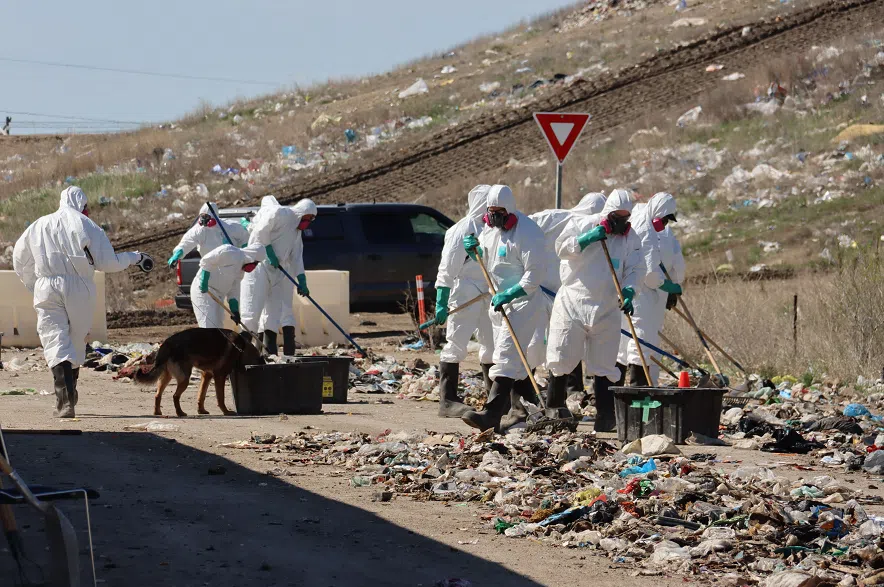The family of Mackenzie Trottier is finally getting a measure of closure after the missing woman’s remains were discovered by police at the Saskatoon landfill.
On Tuesday, the Saskatoon Police Service announced that the search of the landfill, which began on May 1, had ended after 93 days with the discovery of Trottier’s remains. According to police, partial remains were discovered in July and her full remains were found earlier this month.
The remains were identified through dental records. The cause of her death remains undetermined at this stage, police said.
Here’s what we know so far about the recovery of Mackenzie Trottier’s remains:
– full remains have been recovered
– cause of death is undetermined
– one suspect in Trottier’s disappearance
– suspect died from drug overdose in Dec 2023
– suspect identity will not be released pic.twitter.com/jnNP4GKOhn— Alex Brown (@AlexBrownYXE) August 6, 2024
Trottier was 22 years old when she was last seen leaving her home on Trent Crescent on Dec. 21, 2020.
Police said a suspect in Trottier’s disappearance had been identified, but died of a drug overdose before enough evidence to prove their involvement could be obtained. Police said the suspect and Trottier knew each other, but noted that the now-deceased suspect will not be identified publicly.
“Evidence recovered from electronic devices belonging to the suspect supported the search of the landfill,” the police service said in a statement.
Last year, police shared a photo, a composite sketch and a video of a man they believed had information on Trottier’s disappearance. According to police, the man in the video “is not the deceased suspect and is not believed to be involved in Mackenzie’s death.”
Mackenzie Lee Trottier was last seen on Dec. 21, 2020. (findmackenziet.com)
According to police, information collected in 2023 using GPS trackers on garbage trucks identified a specific area of the landfill on Valley Road which could contain evidence in the investigation.
The search, which included forensic anthropology experts and specially trained dogs on loan from the RCMP and Calgary police, was initially expected to last for 33 days, police extended the search at the end of May.
Paul Trottier, Mackenzie’s father, thanked those involved in the search at a media event at Saskatoon police headquarters on Tuesday morning. He also thanked those who have supported his family over the past few years.

Paul Trottier, Mackenzie’s father, thanked those involved in the search and those who have supported his family over the past several years. (Alex Brown/650 CKOM)
“This is a difficult time, but our family wanted to take time to personally thank our community, who supported us over the past three-and-a-half years. The past 93 days in particular have been difficult, but today we have the answers we were searching for,” Paul said.
“Mackenzie is home. Thank you for that.”
Paul Trottier, Mackenzie’s father, now speaks, thanking community and police for finally having answers.
“Mackenzie is home. Thank you for that.”@CKOMNews @CJMENews @miaholoway pic.twitter.com/YPYKEevJR1— Alex Brown (@AlexBrownYXE) August 6, 2024
Forensic anthropologist Dr. Ernie Walker, who assisted with the search, said landfill searches of this type “are not commonly successful.”
According to Walker, the electronic information taken from the GPS units on garbage trucks and a concrete pad at the landfill both contributed to the successful search.
The area police searched was roughly 930 cubic metres in size, or about a third the volume of an Olympic swimming pool. A no-fly zone was also put into effect over the area while police were searching.
Wil Tonowski, a retired detective for the Edmonton Police Service, said in a previous interview that landfill searches are often extremely difficult.
“People talk about searching for a needle in a haystack, it’s even worse than that,” he said, adding that challenges can lie within the size of the landfill, how organized it is, and how much time has passed.
–with files from 650 CKOM’s Mia Holowaychuk and Alex Brown













